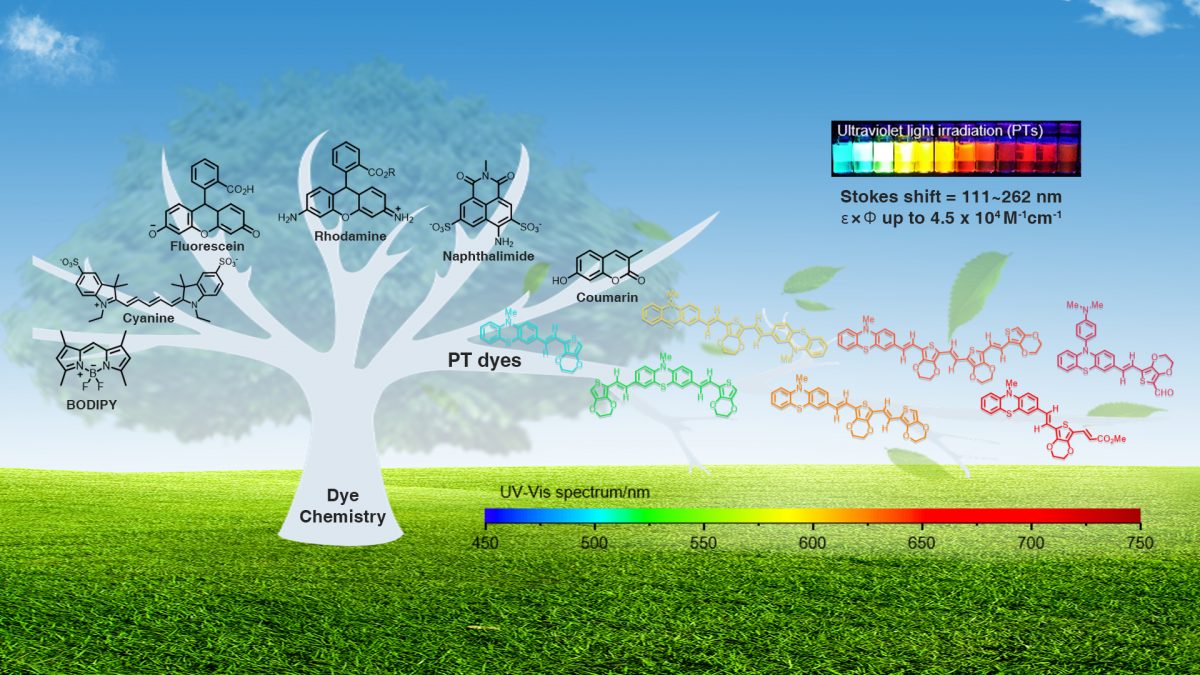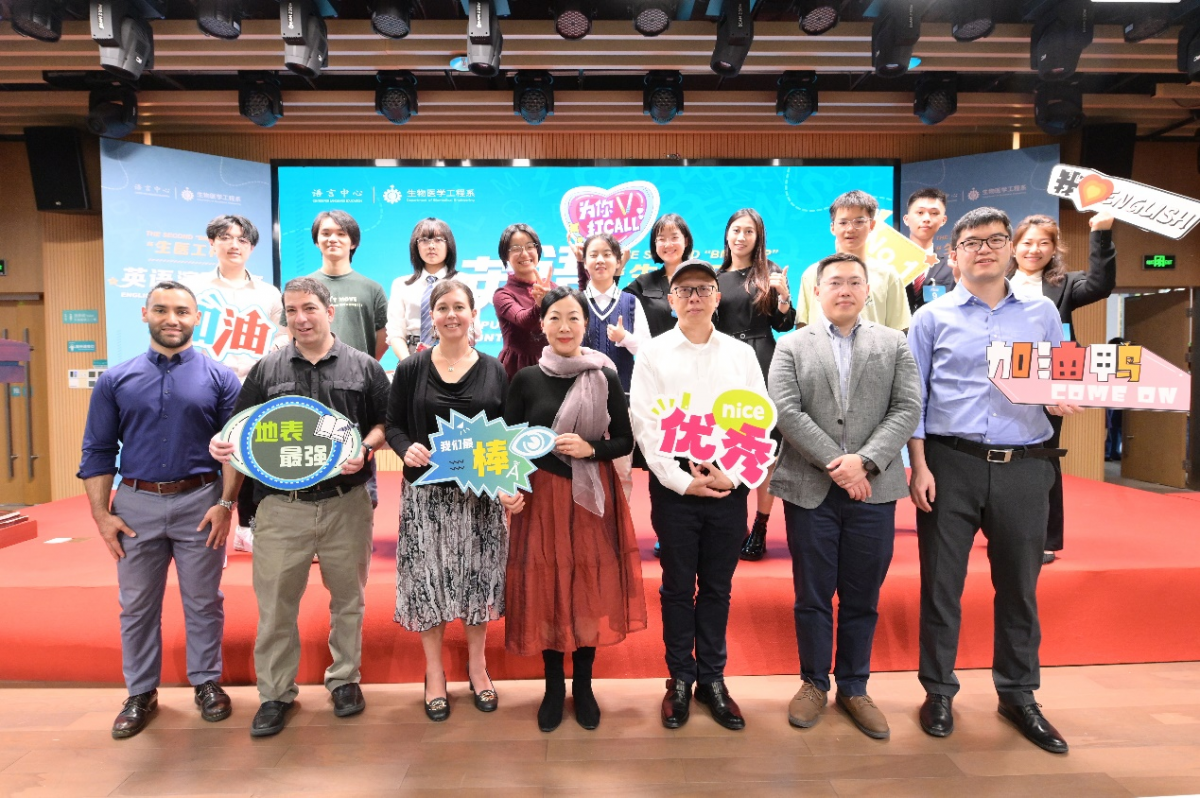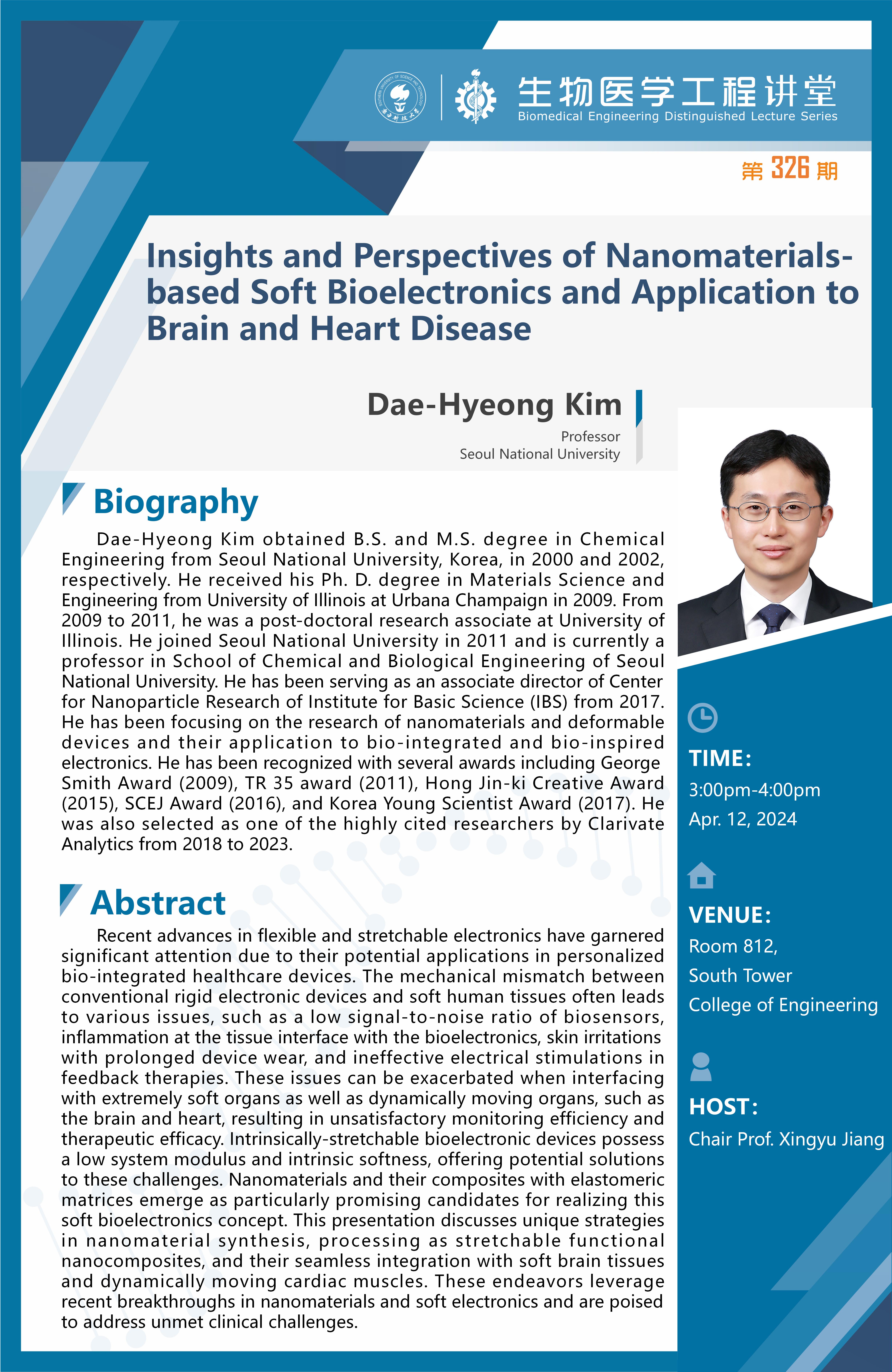
Author: admin
Bin Liu: Accelerating Biomedical Research through AIEgen Innovation
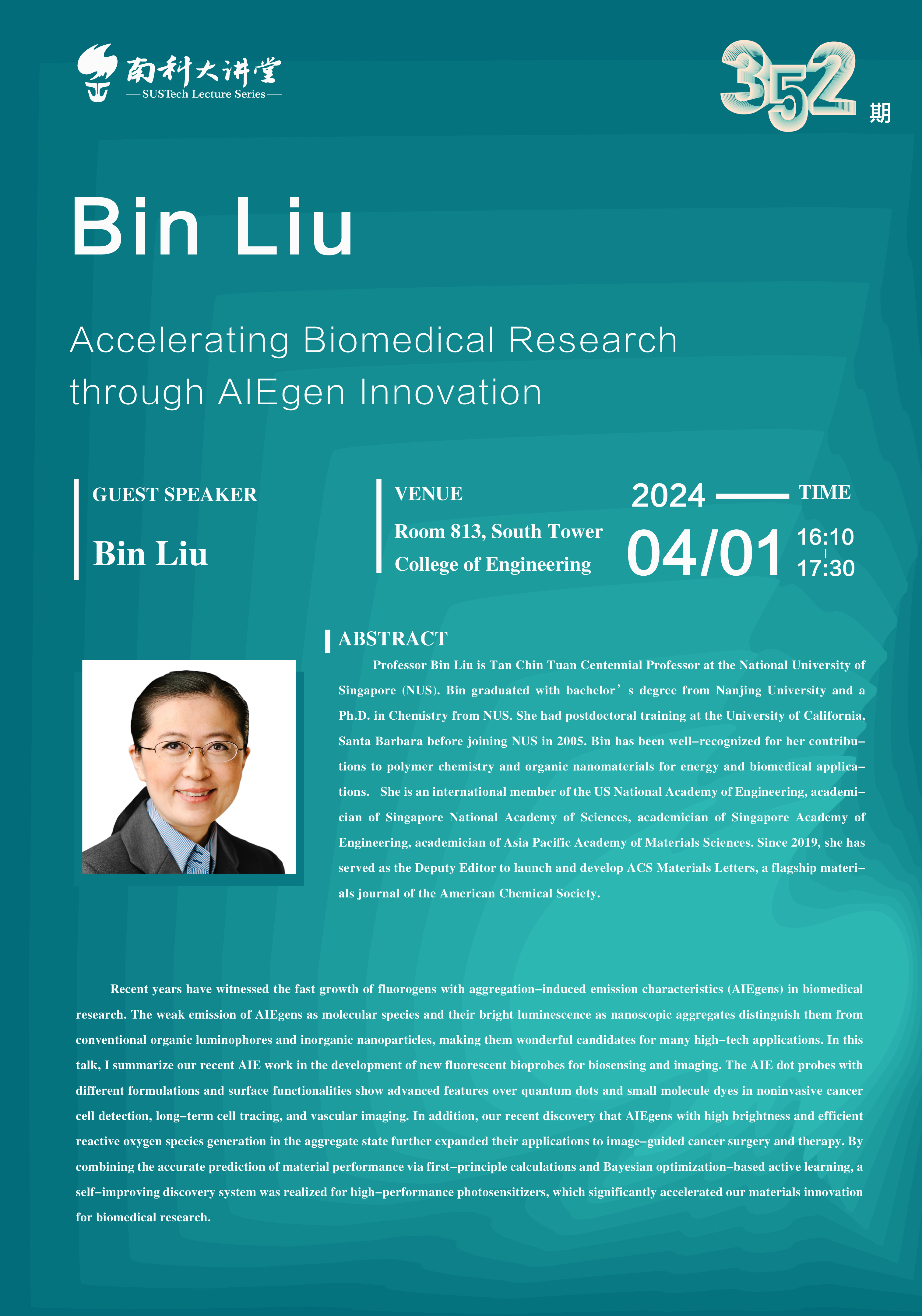
SUSTech holds launch meeting for National Key R&D Program
The National Key R&D Program “Synthetic Biology”, which is being led by the Southern University of Science and Technology (SUSTech), held a meeting on its project’s commencement and implementation plan at the University.
In attendance at the meeting were Jinqiang TIAN, Deputy Director of Life Sciences and Frontier Technology at the China National Center for Biotechnology Development, Bo YUAN, Deputy Director of the Frontier Technology Working Group of the Shenzhen Science and Technology Innovation Commission (SZSTI), and Xueming YANG, Vice President of SUSTech.
Accompanying them were Mingzhou GUO, a project expert, and Hanmei XU, a consulting expert, alongside other experts and researchers in this field.

Jinqiang TIAN provided an analysis of the “Synthetic Biology” project, highlighting its goals, vision, and strategic task deployment. He outlined specific requirements and suggestions for various research institutions involved.
Bo YUAN emphasized SZSTI’s commitment to project development and planning, encouraging the lead unit and responsible individuals to oversee the project’s smooth execution as planned.
Xueming YANG briefed the expert team on SUSTech’s scientific research landscape and expressed high expectations for the innovative results and technologies that would emerge from the project.
Lu ZHANG, Associate Professor of the Department of Biomedical Engineering at SUSTech and project leader, presented a comprehensive report detailing the project’s core research objectives, technical indicators, and implementation strategy.
Following in-depth discussions among the experts, it is believed that this project will solve the inherent challenges of in vivo cell engineering and facilitate breakthroughs in the field of synthetic biomedicine.
Researchers report organic fluorophores for rapid nucleic acid or protein assays
Jingkai YANG | 03/12/2024
Organic small-molecule fluorophores have attracted increasing attention in biosensing, disease diagnostics, semiconductor material, and dye-sensitized solar cells due to their flexible chemical structure and adjustable optical performance. So far, although plenty of excellent organic small-molecule fluorescent dyes have been developed, the detection of these dyes’ signals still requires filters and optoelectronic equipment, limiting their application in scenarios with simple settings. This is due to the established dyes, designed mainly based on a few classical fluorophore motifs, tend to exhibit small Stokes shift (typically < 30 nm, such as rhodamine, fluorescein, boron dipyrromethene (BODIPY), cyanine) or show large Stokes shifts but low brightness (such as naphthalimide or coumarin).
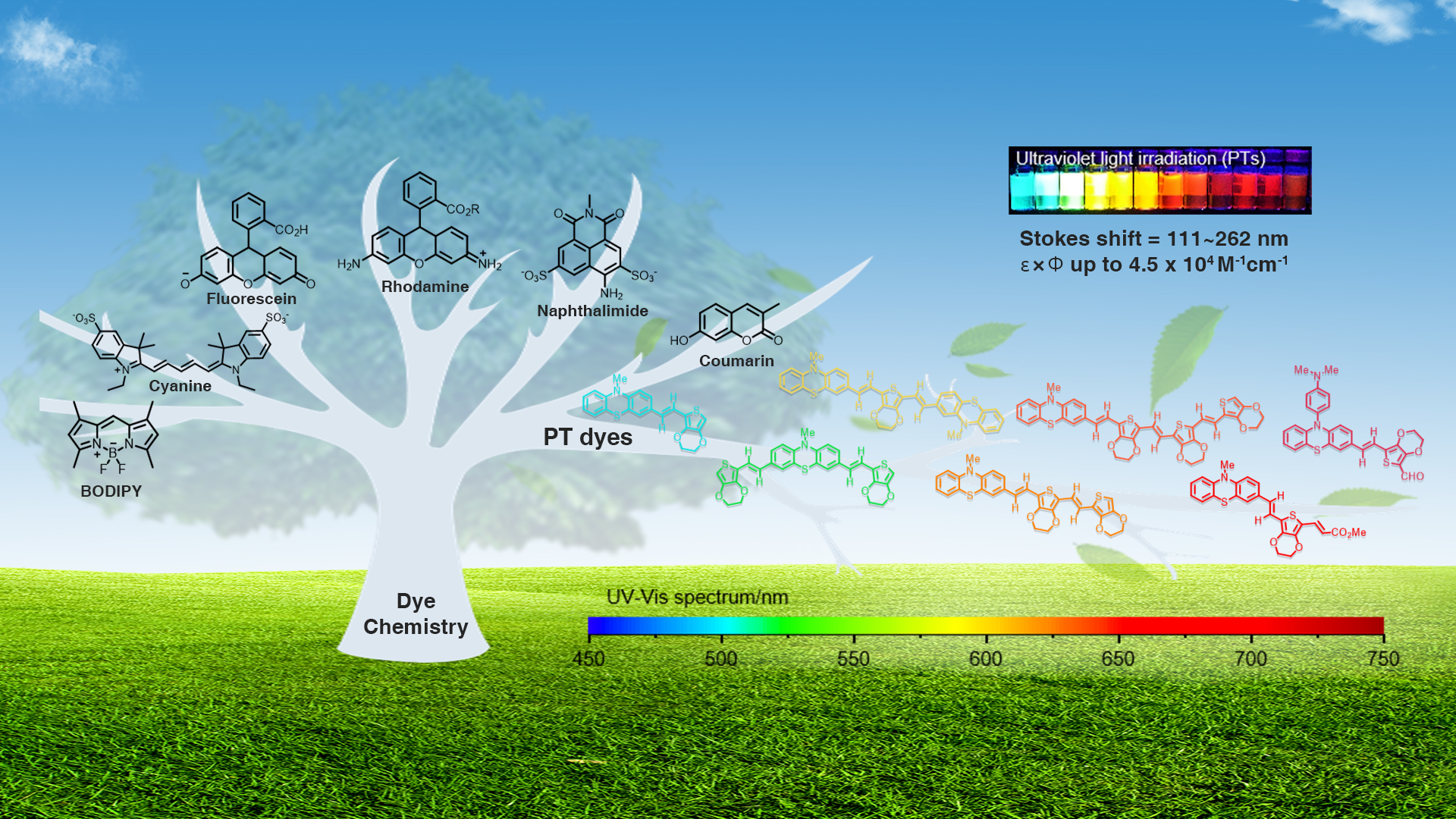
Associate Professor Bo Zhang’s research group from the Department of Biomedical Engineering (BME) at the Southern University of Science and Technology (SUSTech) has recently published a paper that reports a block-building molecular engineering strategy for small-molecule fluorophores and synthesized a series of fluorescent dyes (named PTs) with large Stokes shifts, tunable wavelengths, and balanced brightness, enabling rapid nucleic acids/proteins assays with high sensitivity visible to naked eye.
Their work, entitled “Organic Fluorophores with Large Stokes Shift for the Visualisation of Rapid Protein and Nucleic Acid Assays”, has been published in the renowned international chemistry journal Angewandte Chemie International Edition (Angew. Chem. Int. Ed.).

Figure 1. A Block-building molecular engineering strategy for designing small-molecule fluorophores with large Stokes shift and applications in visualization of rapid protein and nucleic acid assays.
Dye chemistry is rapidly evolving from trial-and-error to molecular engineering, emphasizing function-oriented design and synthesis of structures at the molecular level. In this work, a series of small-molecule fluorophores (named PTs) were designed and synthesized via a block-building molecular engineering strategy. They merge phenothiazine moiety with EDOT moiety by π-conjugation, which exhibits long Stokes shift (up to 262 nm), large molar extinction coefficients (ε, 30,000~100,000 M-1cm-1 in DMSO), high quantum yields (Φ, up to 54.8% in DMSO), and flexible wavelength tunability (from visible to near-infrared).
The team also explored the relationship between the electronic energy levels and optical properties of PTs, and according to density-functional theory (DFT), the stacking of molecular blocks and the introduction of electron-absorbing groups can modulate the HOMO-LUMO gap. In addition, the electronic excited states of PTs calculated by Time-dependent density functional theory (TDDFT) are in agreement with the experimental data.

Figure 2. Energy level calculation and electron cloud distribution calculation of PTs by density function theory. (a) Correlation between the LUMO-HOMO energy gap and excitation wavelength of PTs in experiments; (b) LUMO-HOMO energy and electron cloud distribution of PT-1, PT-5, PT-7; (c) LUMO-HOMO energy and electron cloud distribution of PT-8, PT-10, PT-11, PT-12.
PTs dyes were made into fluorescent nanoparticles (PT-NPs), and observed the number of dye molecules encapsulated in a single nanoparticle can reach one million. These bright PT-NPs were applied to lateral flow assay (LFA). Consequently, direct visualization of rapid nucleocapsid (N) protein detection of SARS-CoV-2 with 100-fold sensitivity improvement over colloidal gold-based LFA was achieved, and the limit of detection was 20 fM. This assay was able to pick up more RT-PCR-confirmed SARS-CoV-2 infected clinical samples compared to colloidal gold-based LFA. Besides, the sensitivity of PT-NPs-based LFA also surpasses reported LFAs with various luminescent materials for SARS-CoV-2 detection.
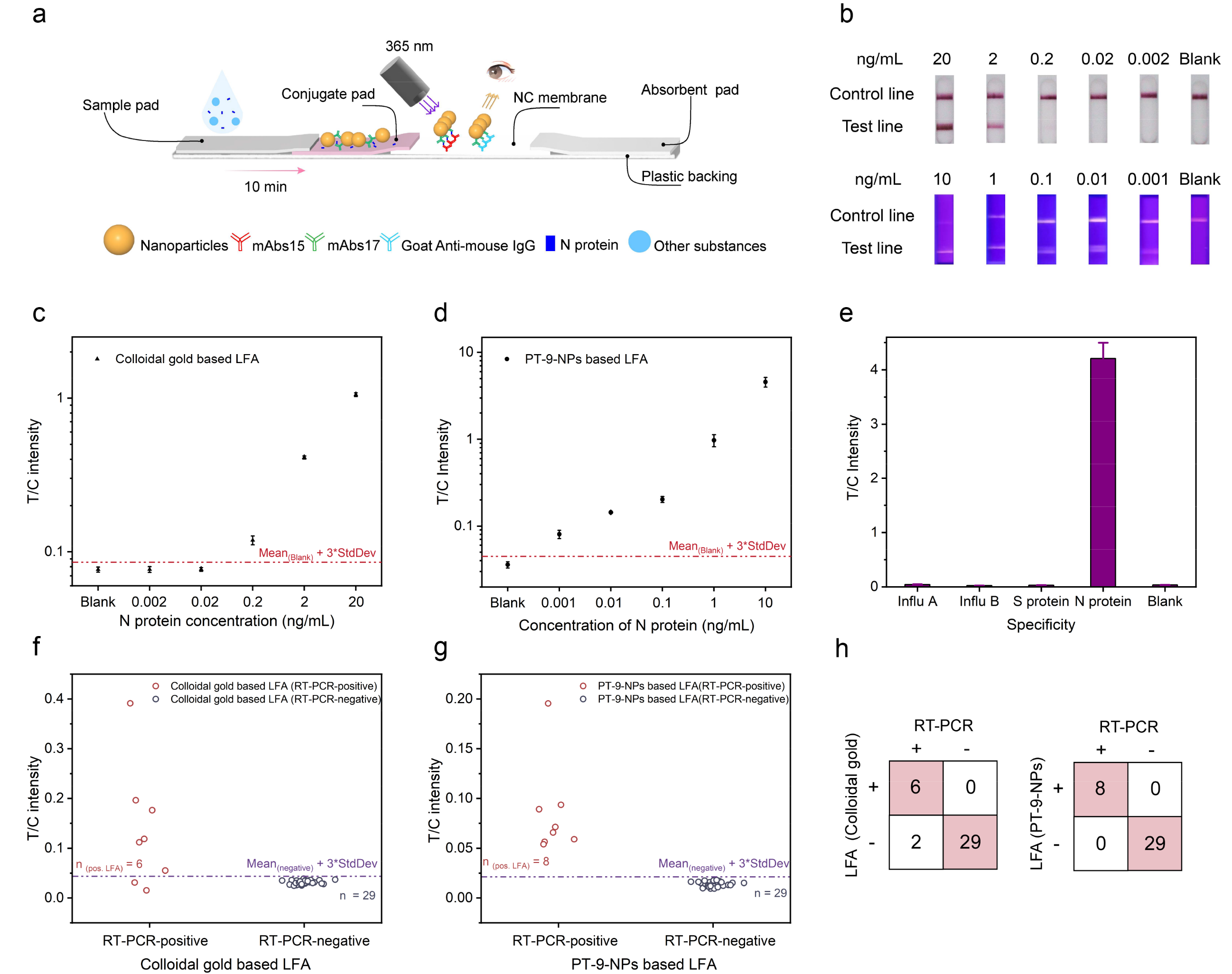
Figure 3. Lateral flow immunochromatography based on PT-NPs for SARS-CoV-2 antigen detection. (a) Schematic diagram of the detection system; (b) Comparison of sensitivity between the present work and colloidal gold assay; (c) Detection curve of the colloidal gold assay; (d) Detection curve of the present work’s assay system; (e) Specificity of the present work’s LFA system; (f-h) Analysis of the clinical assays of the colloidal gold assay and the present work’s LFA.
Since May 2022, the monkeypox epidemic (Mpox) has swept through more than 100 countries and regions, and has been classified as a “Public Health Emergency of International Concern”. In this work, the researchers screened the conserved sequences of monkeypox virus genome by loop-mediated isothermal amplification (LAMP) and designed primer structures adapted to the LFA system based on PT-NPs, which enabled rapid visual nucleic acid detection of monkeypox virus (MPXV) at the single-copy level.
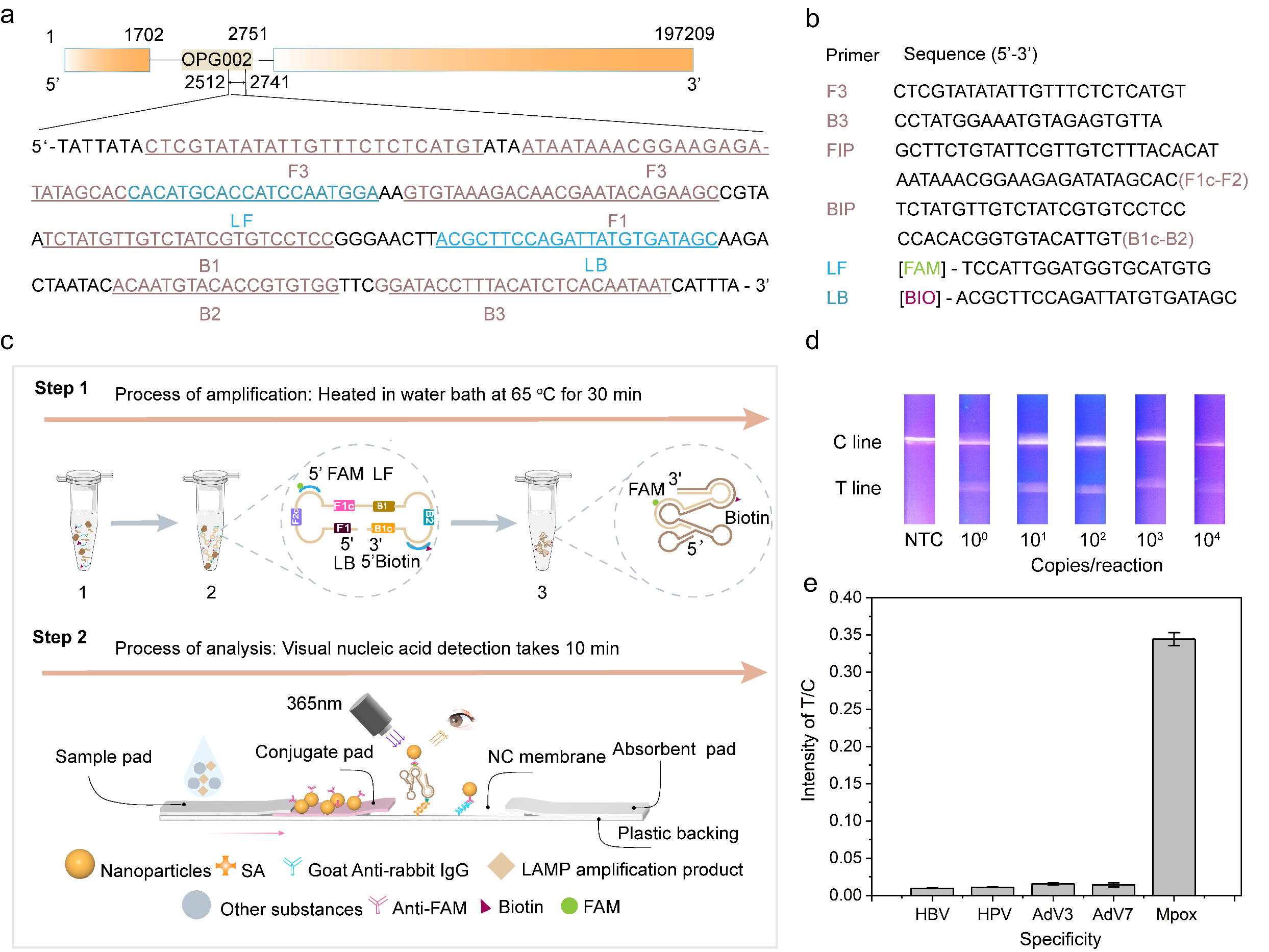
Figure 4. PT-NPs-based lateral flow immunochromatography combined with LAMP technology for monkeypox virus nucleic acid detection; (a) Monkeypox virus nucleic acid detection target sequences; (b) Design of LAMP primer probes for monkeypox virus detection; (c) Schematic diagram of the flow of monkeypox virus nucleic acid detection based on PT-NPs and LAMP; (d) Monkeypox virus detection visualisation of the results of the rapid detection, with a sensitivity of up to single copy; (e) Specificity of the detection system. Sensitivity up to a single copy; (e) Specificity of the detection system.
Since the synthesis of the first unnatural small-molecule fluorescent dye, fluorescein, by humans at the end of the 19th century, dye chemistry has gradually evolved from a trial-and-error process to a disciplined molecular engineering design. This study explores the molecular engineering design of large Stokes shift organic fluorescent dyes, providing an organic conjugated modular design strategy for dye chemistry, as well as new fluorescent materials for in vitro diagnostics to reduce the reliance on expensive optical devices.
Master’s students Jingkai Yang and Ziyi Xu, both from the Department of BME at SUSTech, are the first and co-first authors of this paper, respectively. Associate Professor Bo Zhang is the corresponding author, while Professor Pan-Lin Shao from Guangzhou Medical University (GMU) and Research Assistant Professor Ying Liu from the Department of BME at SUSTech are the co-corresponding authors. SUSTech is the first affiliated unit of the paper.
This work was supported by the National Natural Science Foundation of China (NSFC), Guangdong Fund for Basic and Applied Basic Research, Shenzhen Science and Technology Programme, and Guangdong Key Laboratory of Advanced Biomaterials.
Paper link: https://doi.org/10.1002/anie.202318800
Shaoqin Sarah Gong:Multifunctional drug nanocarriers for various biomedical applications
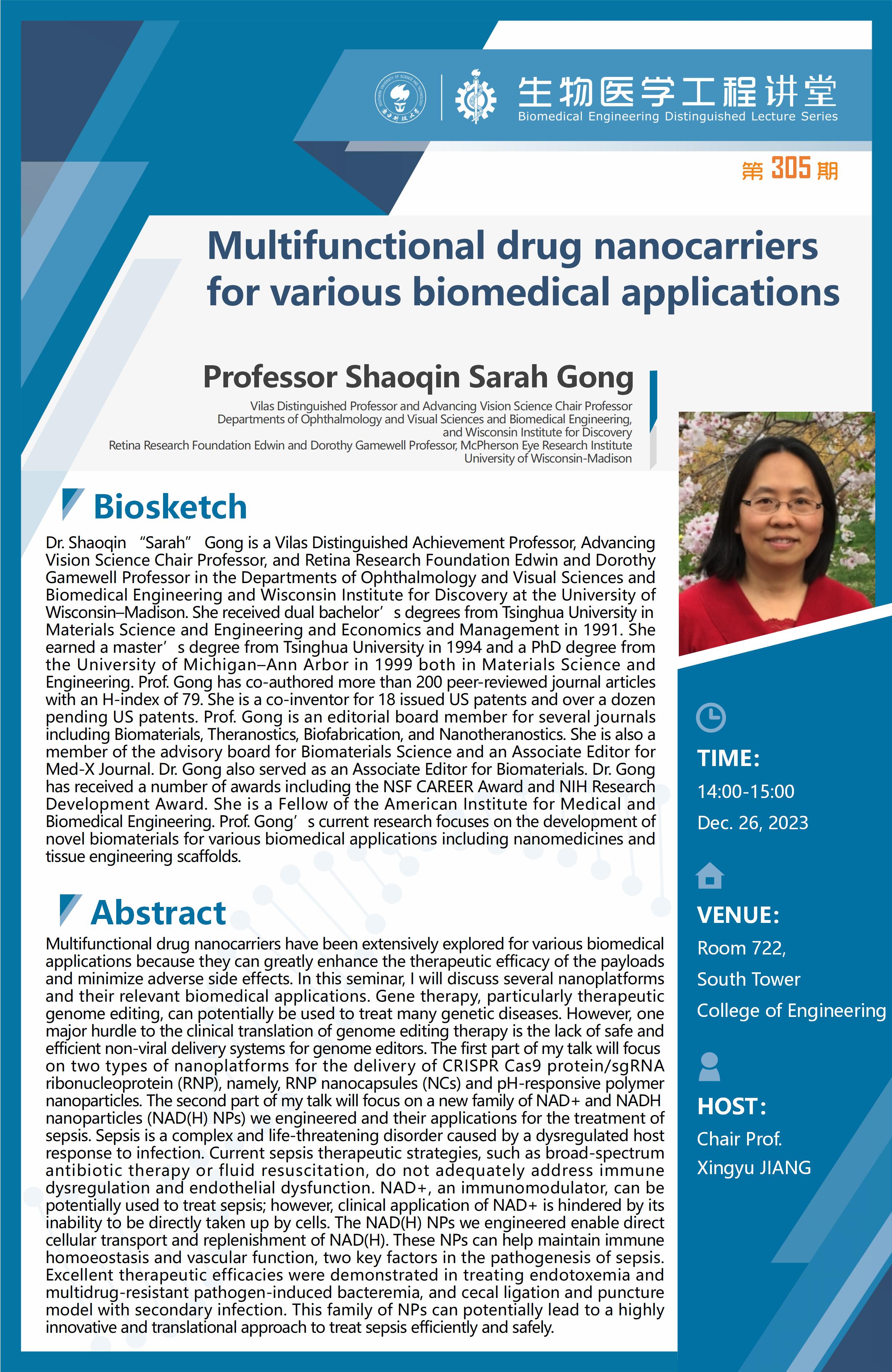
Second “BME Cup” Speaking Contest showcases students’ vision for health care and future society
In a display of intellectual prowess and fluent oratory skills, ten undergraduate and postgraduate students from various departments participated in the Second “BME Cup” Speaking Contest.
The event, held jointly by the Center for Language Education (CLE) and the Department of Biomedical Engineering (BME) at the Southern University of Science and Technology (SUSTech) on December 3, 2023, provided an invaluable platform for participants to share their unique perspectives on health care and the future society.
Under the theme of “Health Care and Future Society”, contestants captivated the audience with their profound understanding of how breakthroughs in science and technology can be harnessed to safeguard people’s health. Each participant delved into thought-provoking discussions surrounding health, healthcare systems, and the role of innovation in shaping our society’s well-being in the future.
Throughout the competition, the contenders skillfully navigated complex subjects such as CAR-T therapy, tissue cryopreservation, implantation restoration, electronic skin, and technology and healthcare. They eloquently discussed the potential of these advancements to revolutionize the healthcare industry and improve the overall quality of life for individuals across the globe.

The panel of judges, comprised of three English teachers from CLE and three faculty members from the Department of BME, evaluated each presentation based on content, delivery, and overall impact. The audiences were impressed by the depth of technology and understanding demonstrated by the contestants and their ability to convey complex concepts in an accessible manner.
The Second “BME Cup” Speaking Contest succeeded in fostering an environment that encouraged critical thinking and collaborative problem-solving. The event not only served as a platform to recognize exceptional students but also highlighted the significance of interdisciplinary approaches in addressing the challenges of our rapidly evolving society.
As the contest came to a conclusion, CLE and the Department of BME expressed their confidence in the potential impact these talented individuals will have in their fields. This impressive demonstration of intellect and communication skills has set a high standard for future editions of the “BME Cup” Speaking Contest.

Center for Language Education
John A. Rogers: Transient Bioelectronic Medicines

Joaquim M. Oliveira: Development of soft and complex micro-physiological systems for disease modelling

